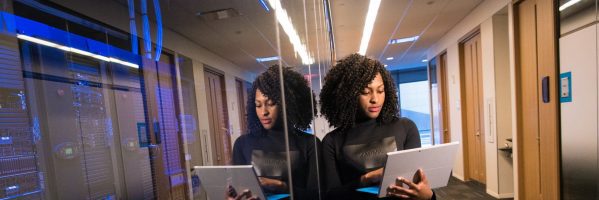Stanford GSB Tops Remodeled Bloomberg Businessweek Ranking

The Stanford Graduate School of Business is no stranger to a top spot, but this is their first time claiming top honors on the Bloomberg Businessweek Best B-School list for U.S. programs.
Were B-School Researchers Wrong About Seattle’s Minimum Wage Laws?

Last year, researchers from the University of Washington Foster School of Business found that the Seattle Minimum Wage Ordinance may have been hurting workers. However, just over a year later, those findings have come into question—according to the same researchers.
Why U.S. News & World Report Changed Its Rankings Methodology

For prospective MBAs, the most difficult step towards a business school degree is knowing where to start. And for many, the most obvious is researching the near-endless amount of college ranking sites. After years of scandals and much-publicized doubts, however, the authority of these rankings may be in question.
In a recent Philadelphia Magazine op-ed, writer Sandy Hingston asks, simply, “Can We All Agree Now That College Rankings Are Bunk?”
Hingston’s critique, which highlights in relative inexactness of the college ranking sites, is not the first of its kind. In 2011, popular New Yorker writer Malcolm Gladwell wrote wrote about his issue with college rankings. In “The Order of Things,” Gladwell notes that the outcomes of students sometimes do not match college reputations.
Principally, Gladwell, the author of the massively popular 2008 book Outliers: The Story of Success, found fault in how publications like U.S. News & World Report conducts rankings. He writes, “the magazine sends a survey to the country’s university and college presidents, provosts, and admissions deans (along with a sampling of high-school guidance counselors) asking them to grade all the schools in their category on a scale of one to five.”
In regards to the scoring system, Gladwell cites numerous incidents that say reputation weighs too heavily. This is important considering that personnel often do not know what other schools are actually like. To illustrate, he brings up a different ranking from the time, with much different results:
“In an article published recently in the Annals of Internal Medicine, Ashwini Sehgal analyzed U.S. News’s ‘Best Hospitals’ rankings, which also rely heavily on reputation ratings generated by professional peers. Sehgal put together a list of objective criteria of performance—such as a hospital’s mortality rates for various surgical procedures, patient-safety rates, nursing-staffing levels, and key technologies. Then he checked to see how well those measures of performance matched each hospital’s reputation rating. The answer, he discovered, was that they didn’t. Having good outcomes doesn’t translate into being admired by other doctors. Why, after all, should a gastroenterologist at the Ochsner Medical Center, in New Orleans, have any specific insight into the performance of the gastroenterology department at Mass General, in Boston, or even, for that matter, have anything more than an anecdotal impression of the gastroenterology department down the road at some hospital in Baton Rouge?”
He goes on to say, “reputational ratings are simply inferences from broad, readily observable features of an institution’s identity, such as its history, its prominence in the media, or the elegance of its architecture. They are prejudices.”
In addition, Gladwell notes important economic distinctions that many college ranking sites ignore. For the sake of simplified ranking, small private schools are compared to massive public institutions and scored equally. But doing so overlooks the economic makeup of enrolled students, funding, and much more.
A Modern Change for U.S. News
Seven years later after Gladwell’s critique, U.S. News & World Report continues to refine its rankings method. The publication’s new changes aim to emphasize economic mobility. This comes just one year after Politico revealed that the upper-echelon schools continually reward students that are already wealthy. That discovery may not be “groundbreaking,” but the data is still jarring. Many of the country’s most well-known institutions enroll more students that come from the top 1 percent of income-earning families than the bottom 60 percent of earners.
Why is this important and why did U.S. News & World Report need to change? Like Gladwell said seven years prior, prejudices feed the rankings and the economics factors are biased. And the amount of inequality it expanded may have been profound.
The Politico study outlined these key factors in the previous U.S. News ranking formula:
- Student Performance
- Lower Acceptance Rates
- Higher Performance on Surveys
- Alumni Donations
These factors weigh heavily for students from more affluent backgrounds. U.S. News, like many of its popular ranking competitors—such as the Financial Times and Bloomberg—rely on similar scoring systems, which often left the economically disadvantaged out of the equation.
The aforementioned 2017 Politico report points to the lengths some schools and state governments went to meet the U.S. News standards:
“Colleges go to great lengths to rise in the rankings. The president of one school ranked in the top 20 said the college caps classes at 19 students, simply because the rankings reward schools for keeping classes under 20 students. In some states, the rankings are built into accountability systems for university presidents. Arizona State trustees put a bonus pegged to the rankings in the president’s contract. In Florida, Gov. Rick Scott set a goal to ‘achieve the first top-10 research public university and a second-ranked public university in the top 25.'”
Robert Morse, U.S. News Chief Data Strategist, says of the changes; “There is an active and ongoing debate about how to best measure quality in education, and we pay close attention to that debate. Over time, our ranking model has put more emphasis on outcomes measures … As part of this evolving process, we’ve wanted to measure whether schools were successful at serving all of their students, regardless of economic status.”
The publication will begin accounting more for social mobility and rewarding of Pell Grants. As well, Morse says, schools that enroll a higher percentage of lower-income students will get more credit for graduation rates. In total, “13 percent of a school’s rank is now dependent on the economic diversity of its campus.”
Will Other College Ranking Sites Follow?
The changes for U.S. News‘s rankings may cause a slow sea change for its competitors. For its undergraduate ranking, SAT/ACT scores now factor less in the overall score. This, like many of the highlights indicated above, is because standardized tests are highly correlative with income. The acceptance rate boost is being completely removed as well.
The dismissive stances from the likes of Hingston and Gladwell likely will not be re-mediated immediately. After all, college ranking sites will likely remain among most popular resource for school research. However, a more modern evaluation can pay dividends in the long-term. And for U.S. News‘ prime competitors, following suit may be an unavoidable remedy.
The next annual U.S. News ranking of the country’s best business schools will arrive early next year. Whether the new changes will weigh heavily in the rankings remains to be seen.
Are Companies Getting Big Data Wrong? – New York News

Let’s explore some of the most interesting stories that have emerged from New York business schools this week.
Columbia Business School Researchers Argue Future of Big Data Lies in Its Ability to Assess Consumers’ Mindset in Real Time – Columbia Business School News
Columbia Business School professors Sandra Matz and Oded Netzer recently published a new discussion paper in the Current Opinion in Behavioral Sciences in which they “address the challenges and opportunities of using big data to benefit both business and consumers based on psychological profiles drawn from information posted on personal websites and discussion forums, and language used on Facebook and Twitter.”
Netzer writes, “Big data usage is quickly evolving. With technological advances in the collection, storage and analysis of large amounts of data, businesses can now gain valid insights on millions of consumers as they go about their daily lives.”
Matz adds, “One benefit of psychological profiling is that the pre-selection of ads based on psychological needs can alleviate the problem of choice overload. It can even help target highly neurotic individuals who display early signs of depression with ads that guide them to self-help pages or offer professional advice.”
You can read the full article here.
When Students Come First – BizEd
According to the National Center for Education Statistics, upwards of 30 percent of freshman in higher-education in the United States are the first members of their family to do so. However, there is also a direct correlation to dropout rates: first-gen students have a dropout rate that is four times that of non-first generation students. The research also found that only 11 percent of the first-gen students manage to secure a Bachelor’s degree within six years.
The statistics find that the reason for the dropout rates has less to do with personal decisions, and more with the “lack the financial, social, and emotional support they need to navigate college successfully,” says BizEd writer Tricia Bisoux. Several schools, including the Rutgers Business School in Newark and New Brunswick, have altered the way they approach its first generation students.
“At Rutgers Business School (RBS) at Rutgers University in New Jersey, the key to supporting first-generation students is a suite of programs called RBS-PLUS (Pathways Leading to Undergraduate Success), launched in 2013. Delivered through the business school’s office of diversity, RBS-PLUS doesn’t just support its current first-generation and low-income undergraduates. It also reaches out to high school students to offer guidance just as they’re beginning their college preparation.”
You can find out more about the program here.
Facebook Is an ‘Extraordinary Failure in Leadership,’ NYU’s Galloway Says – Bloomberg
NYU Stern Marketing Professor Scott Galloway recently stopped by the Bloomberg television studios to talk about the ever-tumultuous Facebook galaxy, dishing out some heavy criticism of Mark Zuckerberg and the tech-giant company as a whole. Watch his interview with the Bloomberg panel here.
Rady School Top 15 in 15

Sponsored Content
The Rady School of Management is approaching its 15th anniversary and since its founding in 2003, the school has reached many remarkable milestones. Through the generous support of the business community, the school has grown exponentially—offering new graduate and undergraduate programs, expanding the ranks of its world-renowned faculty, and constructing state-of-the-art facilities where students thrive. Most impressively, the school’s focus on entrepreneurship and innovation has led to numerous companies, founded by Rady School students and alumni, that are changing our world and significantly contributing to our economy. Here’s a look at the top 15 accomplishments the Rady School has achieved in its first 15 years.
- Over 150 operational startup companies have been started by Rady School alumni and students. These startups have revolutionized industries, led to breakthrough medical devices, drastically enhanced the lives of the visually impaired, improved personal wellness monitoring and have forever transformed our world for the better. Many of the startups are a product of the Rady School’s unique Lab to Market core sequence and accelerators.
- The Rady School is grown into an economic powerhouse, with alumni and student startups creating over a $6 billion dollars impact in the local, national and global economy in the last 15 years.
- Founded with the intention to provide quality business education to leaders in innovative industries, the Rady School has launched distinguished graduate programs to serve the needs of the business community, including the school’s flagship Full-Time MBA and FlexMBA programs, which are already recognized among the best.
- In addition to the MBA programs, three specialty graduate programs have been launched: a Master of Finance, a Master of Science in Business Analytics and a Master of Professional Accountancy.
- The school also has three robust undergraduate programs, a business minor, an accounting minor, and a entrepreneurship and innovation minor, all of which are among the most popular minors on the UC San Diego campus.
- Rady School faculty are recognized as leaders for the quality of their research. Over the past 15 years, the school’s faculty have been ranked number one in the U.S. for intellectual capital by Bloomberg Businessweek, 14th globally for faculty research by the Financial Times and 12th globally in student rating of teaching quality by The Economist.
- Since its inception, the school has received strong support from the business community. The school’s many supporters have been generous with their time and with gifts to support the mission of the school. Notable gifts include: a $100 million gift from Ernest and Evelyn Rady to fund strategic priorities and recruit faculty; a $4 million gift and endowed chair from Nobel Laureate and Rady School professor Harry Markowitz and his wife Barbara, a $30 million naming gift from Ernest and Evelyn Rady, and a $5 million gift from Carol and William Stensrud for program development and faculty recruitment.
- The Rady School has established five Centers of Excellence: the California Institute for Innovation and Development (CIID), the Beyster Institute, the Center for Business Analytics, the Center for Social Innovation and Impact, the Institute for Supply Excellence and Innovation the U.S. – Israel Center on Innovation and Economic Sustainability. Each of the school’s centers focuses on a different topic of importance and provides additional learning opportunities and experience for students.
- Launched in 2013, the StartR Accelerator at the Rady School is a non-profit program for Rady School students and alumni designed to provide entrepreneurs the tools needed to start and grow their businesses. The StartR program includes workshops, mentoring, advice and access to other resources for early-stage companies. At the conclusion of the program, teams present their pitches at Demo Day, attended by investors, industry experts and the San Diego community.
- The Rady School’s mystartupXX program is a one-of-its-kind accelerator that was created to increase and encourage diversity in entrepreneurship. Program participants take workshops on launching startups, team building, leadership, market assessment, consumer feedback, creating a value proposition, validating business models, and understanding financing strategies needed to launch the business. Each team works with a mentor and advisors who monitor and encourage their progress.
- The Rady Venture Fund, a student-assisted venture capital investment fund, was established to support the Rady School’s educational objectives in the areas of entrepreneurship, innovation and transfer of discoveries into the marketplace. Students screen investment leads, perform due diligence, make investment recommendations, and monitor portfolio companies. To date, the fund has invested in five early stage companies.
- The Rady School’s Center for Executive Development (CED) offers courses and certificates provide valuable learning experiences that meet the needs of executives and managers in the rapidly changing world of business. Popular CED courses include: leadership, team building, and interpersonal skills. Executive development faculty are industry experts, renowned researchers, engaging teachers and authors.
- The Rady School’s Ph.D. program began in 2009, attracting top doctoral candidates from around the globe. Rady School Ph.D. students have gone on to teach at top school across the U.S. and the globe.
- Two state-of-the-art buildings have been constructed to house the Rady School and provide a modern and technology-forward learning space. Otterson Hall opened in 2007 and Wells Fargo Hall Opened in 2012. Wells Fargo Hall has been LEED Gold certified for its sustainable practices.
- The Rady School earned accreditation from the Association to Advance Collegiate Schools of Business (AACSB International) in 2011. AACSB International is the premier business education accrediting body, with less than five percent of business schools worldwide achieving accreditation.
To learn more about the Rady School of Management, visit the Marshall website.
Lehigh MBA Success, and More – New York City News

Let’s explore some of the most interesting stories that have emerged from New York business schools this week.
Extraordinary Outcomes for Lehigh’s 1-MBA and M2 Programs – Lehigh College of Business and Economics
This past spring saw Lehigh graduates from the College of Business and Economics’ inaugural 1-MBA (1-year full-time MBA) cohort, as well as the third cohort of its M2 (MS in Management) complete the transition from the classroom to the boardroom.
Employers like Tesla, QVC, and Hubspot snatched up 1-MBA graduates while Amazon, Bloomberg, IBM, KPMG, and more extended offers to nearly 80 percent of M2 graduates. This statistic is very much in line with figures from the 2017 graduates of the M2 program—96 percent of which were employed within three months of graduation by the likes of Deloitte, Vanguard, IBM, and Amazon.
You can read more about the recently Lehigh MBA success here.
School of Management Students Provide Support to Businesses Looking to Export – Binghamton SOM Blog
This semester, Binghamton SOM students took part in the six-month ExportNY “Launch into the Global Marketplace” program, a unique offering that adjunct assistant professor founding director of the Center for International Business Advancement (CIBA) Elena Iankova developed to help give “regional businesses [the] knowledge and resources needed to export their products.”
The basic idea that underlies the “Launch into the Global Marketplace” program is that students research, consult, and support the export plans of participating businesses. Iankova explains: “It’s a two-way street. The students provide the companies research assistance and consultation, and the companies provide the students real-life experiential learning opportunities, helping them develop their management research and consulting skills.”
The program is a partnership between the CIBA and the Alliance for Manufacturing & Technology (AM&T), the Global New York Program of Empire State Development, and the U.S. Commercial Service and the Small Business Administration.
One of the participating companies, Awestruck Ciders, “produces hard ciders from NY state apples” and hopes to export its product to the South African market. Co-founder Patti Wilcox writes: “We think it’s important to the local economy to expand our view of the market on a global scale. We’re fascinated by this idea of an international cultural exchange, and we think doing so commercially is very valuable.”
You can read more about the program here.
The Endless Scroll: How to Tell if You’re a Tech Addict – PC Mag
Just recently, PC Mag dropped its lengthy article “The Endless Scroll: How to Tell if You’re a Tech Addict,” written by Rob Marvin.
In the piece, Marvin highlights Irresistible: The Rise of Addictive Technology and the Business of Keeping Us Hooked from NYU Stern School of Business professor Adam Alter, who doesn’t mince his words when it comes to tech addiction.
“There’s a myth that there’s something different about people with addictions from people without addictions,” Alter explained in his interview with Marvin. “Right now, if you are a person who doesn’t have an addiction, does that make you in some qualitative or categorical way different from people who do? The more I’ve studied this, the more I realized that just isn’t true.”

“Right now, if you are a person who doesn’t have an addiction, does that make you in some qualitative or categorical way different from people who do? The more I’ve studied this, the more I realized that just isn’t true.” – NYU Stern professor Adam Alter, interviewed by PC Mag / Photo via PC Mag
You can read more from Marvin’s excellent piece, out now, over at PC Mag.
